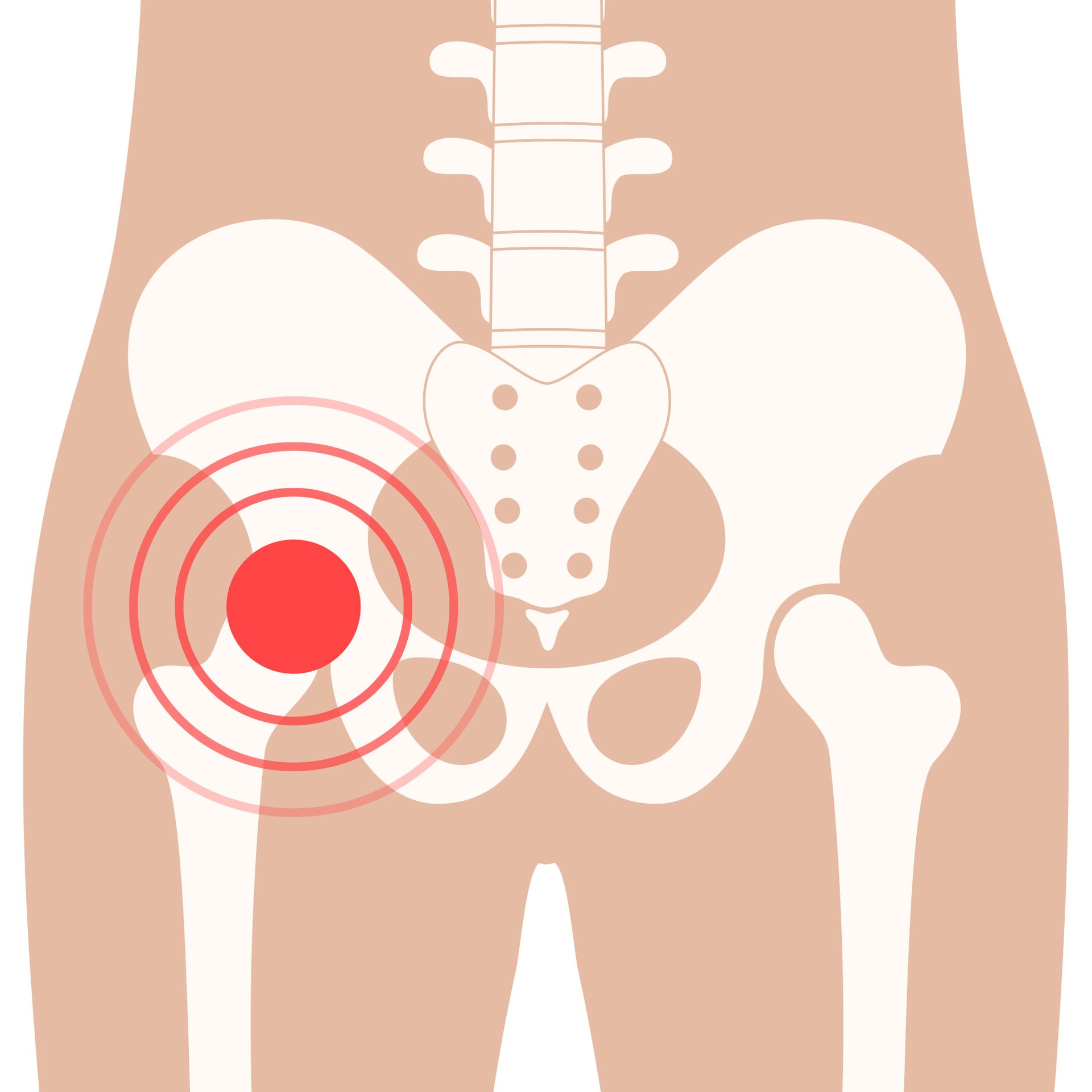Sacroiliac Joint Injection
Sacroiliac Joint Injection
Sacroiliac Joint injection for Low Back and Buttock Pain
What Are Sacroiliac Joints?
Sacroiliac joints connect your spine to your hip bone. They connect the bottom of the spine, calledthe sacrum, to the outer part of the hip bone, called the ilium. You have two sacroiliac joints. One is found on each side of the sacrum. Sacroiliac joints help control your hip area when you move. They help transfer forces from your lower body to your upper body. Each sacroiliac joint has several ligaments to help strengthen it.

What Is Sacroiliac Joint Pain?
You may feel pain if a sacroiliac joint is injured. At times it may feel like simple muscle tension, but at other times the pain can be severe. Sometimes cartilage inside the joint is injured, but at other times only ligaments around the joint are affected. You usually feel sacroiliac joint pain in an area from your low back down to your buttocks. But sometimes, if a joint is very inflamed, pain may even extend down the back of the leg. The diagram at right shows where sacroiliac joint pain is usually felt.
How Do I Know If I Have Sacroiliac Joint Pain?
If you have pain in these areas you may have sacroiliac joint pain. Common tests such as x-rays or MRIs may not always show if a sacroiliac joint is causing pain. Your pain doctor can do other tests to find out if you have sacroiliac joint pain.
What Is A Sacroiliac Joint Injection?
In a sacroiliac joint injection, a local anesthetic and corticosteroid are injected into one or both of your sacroiliac joints, or to the ligaments surrounding the joints. The local anesthetic, a numbing medicine, lessens your pain temporarily. The corticosteroid reduces inflammation that may be causing pain. The injection can be used for diagnosis and treatment. If the injection immediately lessens your pain and helps you move better, it tells the doctor which joint is causing the pain.
What Happens During An Injection?
The doctor will insert a thin needle directly into the sacroiliac joint. Fluoroscopy, a type of x-ray, may be used to ensure a safe and proper position for the needle. Dye will also be injected to help make sure the needle is at the correct spot. Once the doctor is sure the needle is correctly placed, the medicine will be injected.

What Happens After An Injection?
You will be monitored for up to 30 minutes after the injection. When you are ready to leave, the clinic will give you discharge instructions. You will also be given a pain diary. It is important to fill this out because it helps your doctor know how the injection is working. It may help to move in ways that hurt before the injection, to see if the pain is still there, but do not overdo it. Take it easy for the rest of the day. You may feel immediate pain relief and numbness in your back for up to six hours after the injection. This tells you the medication has reached the right spot. Your pain may return after this short pain-free period, or may even be a little worse for a day or two. This is normal. It may be caused by needle irritation or by the corticosteroid itself. Corticosteroids usually take two or three days to start working, but can take as long as a week. You can usually return to work the day after the injection, but always check with your doctor.
How Long Can I Expect Pain Relief?
How long you can expect pain relief depends on how many areas are injured, and on the amount of inflammation. Sometimes an injection can bring several months of pain relief, and then more treatment is needed. Other times, particularly if there is no underlying bone or joint problem, one injection brings long-term pain relief. If your pain is caused by injury to more than one area, only some of your symptoms may be helped by one injection. A SACROILIAC JOINT INJECTION is an outpatient procedure for treating low back and buttock pain. This information has been provided by your doctor so you can better understand this procedure. Your doctor will make the best recommendation for your specific needs. This pamphlet is for general education only. Specific questions or concerns should always be directed to your doctor. Your doctor can explain possible risks or side effects.
Location:
6801 Mcpherson Road Suite 334 Laredo, TX 78041
Phone:
Hours:
Mon - Thu : 7:00am - 5:00pm
Fri : 7:00am - 4:00pm

